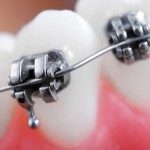
The 0.022-inch orthodontic bracket slot was proposed by Angle in 1925 but with improvements in technology making thinner wires possible slot sizes could be reduced to 0.018-inch. Advantages and disadvantages for the 0.018-inch bracket slot size have been suggested.
The main aim of this review was to determine whether the use of 0.018-inch or 0.022-inch bracket slots influences the duration of treatment, efficiency of space closure, efficiency of alignment, quality of orthodontic finishing, level of discomfort, and level of root resorption observed.
Methods
Searches were conducted in the PubMed/Medline, BIREME, Scopus, Web of Science, Google Scholar, and Open Grey databases with no language or date restrictions. Prospective and retrospective clinical studies with patients whose fixed orthodontic appliances utilized 0.018-inch or 0.022-inch bracket slots were considered. Two reviewers independently selected studies and abstracted data. Risk of bias was assessed using 3 questions; 1) Are the results erroneously biased in a certain direction? (2) Are there any serious confounding or other distorting influences? and (3) Is it likely that the results occurred by chance? A narrative summary was provided because of study heterogeneity.
Results
- 4 studies (1 RCT, 3 retrospective studies) were included.
- 3 of the 4 studies suggested greater efficiency with the 0.018-inch bracket slot size than the 0.022-inch counterpart.
Conclusions
The authors concluded: –
While most studies indicated a shorter duration of treatment in patients with 0.018-inch bracket slots, no available data confirmed the higher efficiency of one system over the other. The biases in the studies did not allow for a reliable conclusion; therefore, new studies with a better methodologic design are needed.
Comments
While a number of databases have been searched to answered the question posed by the authors, only 4 studies were identified. Three of the studies were retrospective so at greater risk of bias than prospective studies. The one RCT that was included compared dental alignment in three types of archwires and two widely used simple and double edgewise bracket slot sizes (0.018-inch and 0.022-inch) showed that the time and rate necessary for alignment were very similar in both bracket slot sizes for the maxillary arch, but alignment was significantly faster for the 0.022-inch slot in the mandibular arch. However, this study was also considered to be at risk of bias. As all the included studies were of limited quality the findings of this review should be viewed with caution and high quality RCTs are needed to be conducted to provide reliable evidence on this question.
Links
Primary Paper
Vieira EP, Watanabe BSD, Pontes LF, Mattos JNF, Maia LC, Normando D. The effect of bracket slot size on the effectiveness of orthodontic treatment: A systematic review. Angle Orthod. 2017 Sep 26. doi: 10.2319/031217-185.1. [Epub ahead of print] PubMed PMID: 28949767.
Other references
Dental Elf- 22nd Jul 2016
